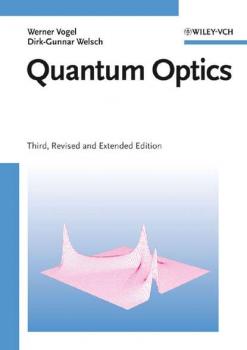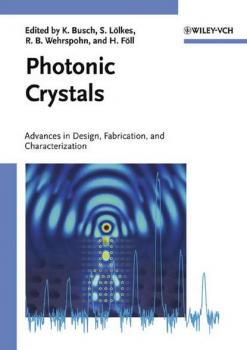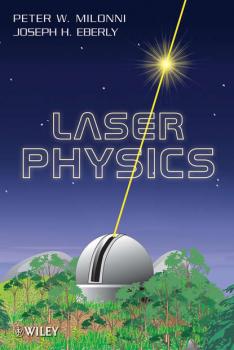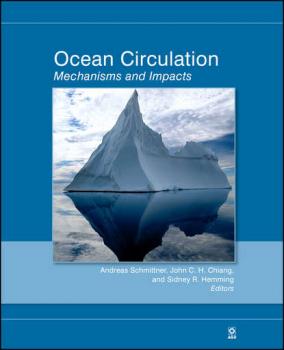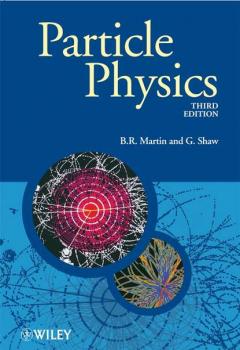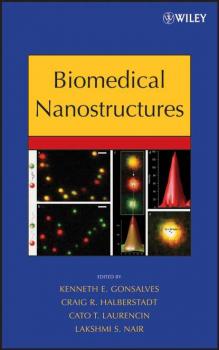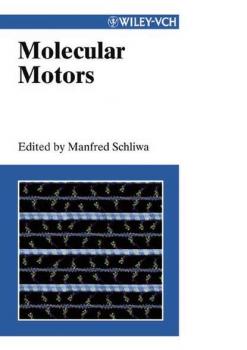ТОП просматриваемых книг сайта:
Прочая образовательная литература
Различные книги в жанре Прочая образовательная литература, доступные для чтения и скачиванияАннотация
This is the third, revised and extended edition of the acknowledged «Lectures on Quantum Optics» by W. Vogel and D.-G. Welsch. It offers theoretical concepts of quantum optics, with special emphasis on current research trends. A unified concept of measurement-based nonclassicality and entanglement criteria and a unified approach to medium-assisted electromagnetic vacuum effects including Van der Waals and Casimir Forces are the main new topics that are included in the revised edition. The rigorous development of quantum optics in the context of quantum field theory and the attention to details makes the book valuable to graduate students as well as to researchers. Voices to the new edition: «There are many good books in this area, but this one really excels in terms of broad coverage, choice of topics, and precision. It is very useful as a textbook for a quantum optics course, and also as a general reference for researchers in quantum optics. … Also, the new edition includes some subtle and fundamental material about non-classicality, medium-assisted electromagnetic vacuum effects, and leaky cavities, based on research developed by the authors.» Prof. Luiz Davidovich, Rio de Janeiro
Аннотация
The majority of the contributions in this topically edited book stems from the priority program SPP 1113 «Photonische Kristalle» run by the Deutsche Forschungsgemeinschaft (DFG), resulting in a survey of the current state of photonic crystal research in Germany. The first part of the book describes methods for the theoretical analysis of their optical properties as well as the results. The main part is dedicated to the fabrication, characterization and modeling of two- and three-dimensional photonic crystals, while the final section presents a wide spectrum of applications: gas sensors, micro-lasers, and photonic crystal fibers. Illustrated in full color, this book is not only of interest to advanced students and researchers in physics, electrical engineering, and material science, but also to company R&D departments involved in photonic crystal-related technological developments.
Аннотация
Although the basic principles of lasers have remained unchanged in the past 20 years, there has been a shift in the kinds of lasers generating interest. Providing a comprehensive introduction to the operating principles and applications of lasers, this second edition of the classic book on the subject reveals the latest developments and applications of lasers. Placing more emphasis on applications of lasers and on optical physics, the book's self-contained discussions will appeal to physicists, chemists, optical scientists, engineers, and advanced undergraduate students.
Аннотация
This entry-level textbook, covering the area of tissue optics, is based on the lecture notes for a graduate course (Bio-optical Imaging) that has been taught six times by the authors at Texas A&M University. After the fundamentals of photon transport in biological tissues are established, various optical imaging techniques for biological tissues are covered. The imaging modalities include ballistic imaging, quasi-ballistic imaging (optical coherence tomography), diffusion imaging, and ultrasound-aided hybrid imaging. The basic physics and engineering of each imaging technique are emphasized. A solutions manual is available for instructors; to obtain a copy please email the editorial department at [email protected].
Аннотация
Published by the American Geophysical Union as part of the Geophysical Monograph Series, Volume 173. The ocean's meridional overturning circulation (MOC) is a key factor in climate change. The Atlantic MOC, in particular, is believed to play an active role in the regional and global climate variability. It is associated with the recent debate on rapid climate change, the Atlantic Multi-Decadal Oscillation (AMO), global warming, and Atlantic hurricanes. This is the first book to deal with all aspects of the ocean's large-scale meridional overturning circulation, and is a coherent presentation, from a mechanistic point of view, of our current understanding of paleo, present-day, and future variability and change. It presents the current state of the science by bringing together the world's leading experts in physical, chemical, and biological oceanography, marine geology, geochemistry, paleoceanography, and climate modeling. A mix of overview and research papers makes this volume suitable not only for experts in the field, but also for students and anyone interested in climate change and the oceans.
Аннотация
An essential introduction to particle physics, with coverage ranging from the basics through to the very latest developments, in an accessible and carefully structured text. Particle Physics: Third Edition is a revision of a highly regarded introduction to particle physics. In its two previous editions this book has proved to be an accessible and balanced introduction to modern particle physics, suitable for those students needed a more comprehensive introduction to the subject than provided by the ‘compendium’ style physics books. In the Third Edition the standard model of particle physics is carefully developed whilst unnecessary mathematical formalism is avoided where possible. Emphasis is placed on the interpretation of experimental data in terms of the basic properties of quarks and leptons. One of the major developments of the past decade has been the establishing of the existence of neutrino oscillations. This will have a profound effect on the plans of experimentalists. This latest edition brings the text fully up-to-date, and includes new sections on neutrino physics, as well as expanded coverage of detectors, such as the LHC detector. End of chapter problems with a full set of hints for their solutions provided at the end of the book. An accessible and carefully structured introduction to this demanding subject. Includes more advanced material in optional ‘starred’ sections. Coverage of the foundations of the subject, as well as the very latest developments.
Аннотация
Learn to Use Nanoscale Materials to Design Novel Biomedical Devices and Applications Discover how to take full advantage of nanoscale materials in the design and fabrication of leading-edge biomedical devices. The authors introduce you to a variety of possible clinical applications such as drug delivery, diagnostics, and cancer therapy. In addition, the authors explore the interface between micron and nanoscale materials for the development of applications such as tissue engineering. Finally, they examine the mechanisms of cell interactions with material surfaces through the use of nanotechnology-based material processing and characterization methods. The text's three sections highlight its interdisciplinary approach: * Part One: Nanostructure Fabrication * Part Two: Bio-Nano Interfaces * Part Three: Clinical Applications of Nanostructures Among the key topics covered are nanotechnology in tissue regeneration; biomolecular engineering; receptor-ligand interactions; cell-biomaterial interactions; nanomaterials in diagnostics, drug delivery, and cancer therapy; and nano- and micron-level engineering and fabrication. Throughout the text, clear examples guide you through the chemistry and the processing involved in designing and developing nanoscale materials for biomedical devices. Each chapter begins with an introduction and ends with a conclusion highlighting the key points. In addition, references at the end of the chapter help you expand your research on any individual topic. In summary, this book helps biomedical researchers and engineers understand the physical phenomena that occur at the nanoscale in order to design novel cell-based constructs for a wide range of applications.
Аннотация
The latest knowledge on molecular motors is vital for the understanding of a wide range of biological and medical topics: cell motility, organelle movement, virus transport, developmental asymmetry, myopathies, and sensory defects are all related to the function or malfunction of these minute molecular machines. Since there is a vast amount of information on motor mechanisms and potential biomedical and nanobiotechnological applications, this handbook fulfills the need for a collection of current research results on the functionality, regulation, and interactions of cytoskeletal, DNA, and rotary motors. Here, leading experts present a concise insight, ranging from atomic structure, biochemistry, and biophysics to cell biology, developmental biology and pathology. Basic principles and applications make this book a valuable reference tool for researchers, professionals, and clinicians alike – all set to become a «classic» in the years to come.
Аннотация
The role of transcription factors in activating specific genes in blood cells is an important facet of hematopoiesis. Equally important, however, is the pursuit of genes rearranged and aberrantly activated in leukemias (blood malignancies). Transcription Factors: Normal and Malignant Development of Blood Cells focuses on those major transcription factors involved in activation of lineage-specific gene expression during normal versus malignant development of specific blood lineages, as revealed from gene promoter studies, knockout of transcription factors in mice models, and the identification and characterization of chromosomal rearrangement in human blood leukemias. This complete digest of current transcription factor data offers comprehensive coverage of the myriad of transcription factors in blood cell development, composed by established experts in the field. In addition to updating the reader on the connection between chromosomal translocations involving transcription factors and cellular transformation leading to leukemia, Transcription Factors also reviews such subjects as: Transcription factors and the megakaryocytic, myeloid, and erythroid lineages Leukemias due to chromosomal translocations involving gene encoding transcription factors Oncogenesis and hematopoiesis In vivo studies of transcription factors implicated in hematopoiesis And much more Appealing to both the researcher and the clinician in the field of hematology, Transcription Factors is a timely presentation of cell lineage development and sheds light on the processes involved in the development of specific leukemias. Providing insight into the study of transcription factors, readers will gain an understanding of mechanisms that lead to normal lineage commitment and terminal differentiation.
Аннотация
This book brings together material on all aspects of immunological tolerance. Basic mechanisms of tolerance are examined in detail, including mechanisms of peripheral T cell tolerance, molecular and genetic mechanisms for maintaining self tolerance, partial T cell activation, and the role of apoptosis in tolerance. Careful consideration is also given to the clinical applications of our understanding of immunological tolerance, with specific chapters dealing with T cell activation during tumour therapy, antiantigen specific immune suppression, tolerance in infectious diseases, tolerance during pregnancy, and tolerance during various autoimmune diseases.

